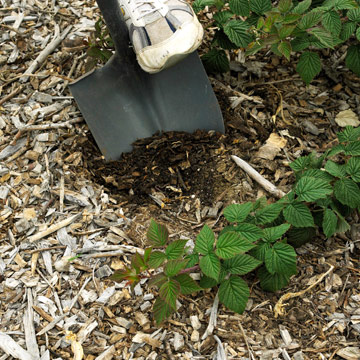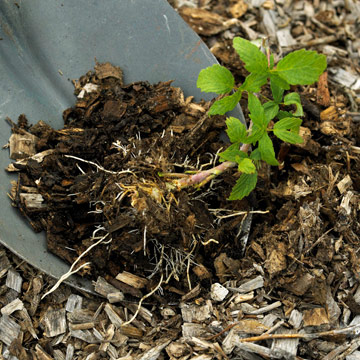





Layering makes propagating many of your favorite shrubs, vines, and perennials a cinch. In fact, it's how many plants spread in nature -- and you might even find that some of the plants in your yard are already layering themselves.
Layering means you bend a branch down until it makes contact with the soil. Allow it to grow roots while it's still attached to the mother plant. Once it develops a strong, healthy root system, cut the branch from the main plant and transplant it.
You can improve your flower beds by planting cover crops; click here to learn how.
continue reading below
Step 1: Pick a Healthy Stem Start the process by choosing a young shoot that's about 2 to 3 feet long and you can easily bend to the ground. (Vines, such as wisteria are perfect candidates for layering.)
Step 2: Prepare the Ground Because layering involves burying part of the stem, you'll have the best luck if you gently loosen the ground underneath the shoot you wish to layer.
Here's a hint: If your soil tends to dry out or crust over, add a handful of peat moss, compost, or other form of organic matter to it.
Step 3: Prepare the Shoot Pick a spot about halfway along the stem where a leaf meets the shoot. Carefully make a small cut at that point. Remove all the leaves on the top 12 inches or so of the stem.
Here's a hint: Speed up the rooting process by applying a small amount of rooting hormone to the cut.
Step 4: Bury it Pin down your shoot, making sure the cut spot makes contact with the soil. Once your shoot is secure, mound about 4 inches of soil over the cut part of the stem. Water it well.
Here's a hint: Gently bend up the end of the shoot so it's at a 90-degree angle to the ground. (Stake it to keep it this way.) This may speed up the rooting process.

Step 5: Be Patient Now's the hard part -- being patient. While some plants form roots more quickly than others, it generally takes about a year until your new plant has become well-rooted enough that you can separate it from the main plant.
Step 6: Transplant it Once your layer is well-rooted, carefully dig up the shoot, disturbing the roots as little as possible. Cut the rooted section off the main plant and transplant your layer in its new home.
Here's a hint: Keep the new layer well-watered the first couple of weeks after transplanting to help it become established more easily.
Copyright © www.100flowers.win Botanic Garden All Rights Reserved